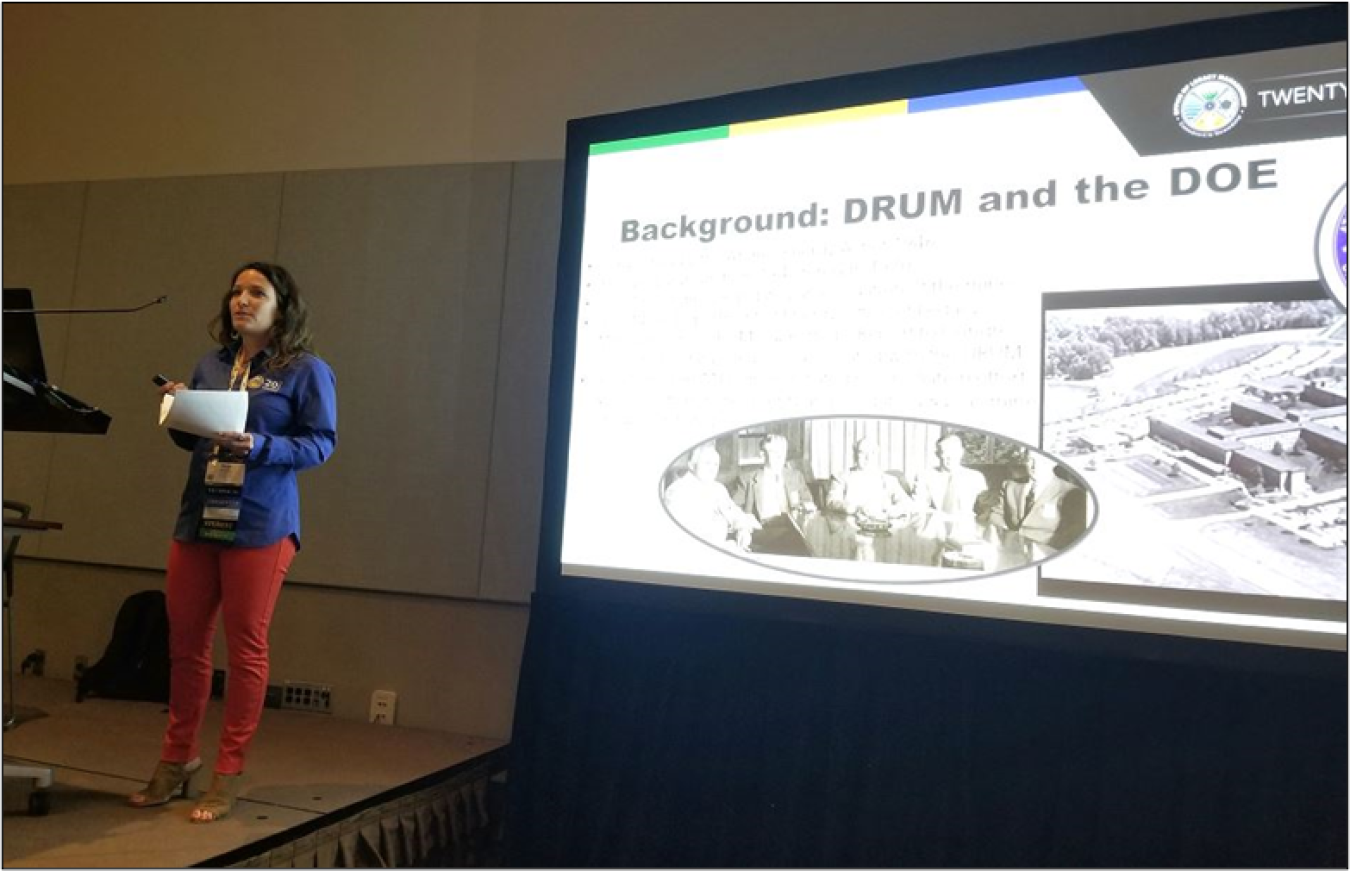Subject matter experts discuss papers during final day of Waste Management Symposia in Phoenix
March 14, 2024
Office of Legacy Management (LM) and LM Support Partners (LMSP) presented information from academic papers Thursday morning at the Waste Management Symposia in Phoenix. The presentations took place in three sessions, and LM and LMSP subject matter experts presented on the following topics:
Partnering with Indigenous groups
LM Physical Scientist Paige Schwarz spoke about LM’s Defense-Related Uranium Mines (DRUM) team’s three-phase efforts to verify and validate (V&V) abandoned uranium mines on federal, state, tribal, and private lands, mostly in the southwestern United States.
DRUM Campaign 1 began in 2017 and addressed 2,329 mines on federal and state lands. Campaign 2 began in 2022 and addressed 210 mines on tribal lands. Campaign 3 will begin this year and will address 543 mines on private lands.
LM is collaborating with a number of federal and tribal partners on V&V. Schwarz said a crucial aspect of the work is listening to the needs and concerns of the affected partners and stakeholders, working with Indigenous governments and communities, and informing tribal partners of the potential hazards of the mines.

“This work is taking place on their land, and near their homes,” Schwarz said. “They deserve to know what’s going on.”
Groundwater monitoring at Shiprock disposal site
LMSP Hydrogeologist Pete Schillig spoke during a presentation Thursday on the topic of predictive modeling of groundwater migration at the Shiprock disposal site in New Mexico.
Schillig described LM’s effort to dewater the east terrace groundwater system at Shiprock to enhance natural flushing of the flood plain alluvium by extracting groundwater and treating it with evaporation.
The existing evaporation pond at Shiprock is nearing the end of its design life, and a temporary treatment system is being designed. Treated water from the effluent can be released back into the groundwater flow system on the floodplain on the northern boundary of the site.

Modeling approach for dewatering at Rifle disposal site
LMSP Junior Groundwater Scientist Katie Mclain discussed a water-balancing model to help design a plan to dewater the Rifle disposal cell in Colorado.
Groundwater scientists are calculating the water balance at the cell by adding up inflows and outflows to get a better idea of how much water has infiltrated the cell. The work begins by comparing how much water is infiltrating the cell cover to how much is flowing out.
Standpipes at the site that had been used to pump water from the cell have outlived their usefulness, and LM is developing a replacement plan. LM’s goal is to not let groundwater come into contact with different chemicals that could potentially be moved downgradient from the cell.
“We’re testing different pumping rates moving forward,” Mclain said. “We’re very interested in getting all of the water out of the cell as quickly as we can.”

